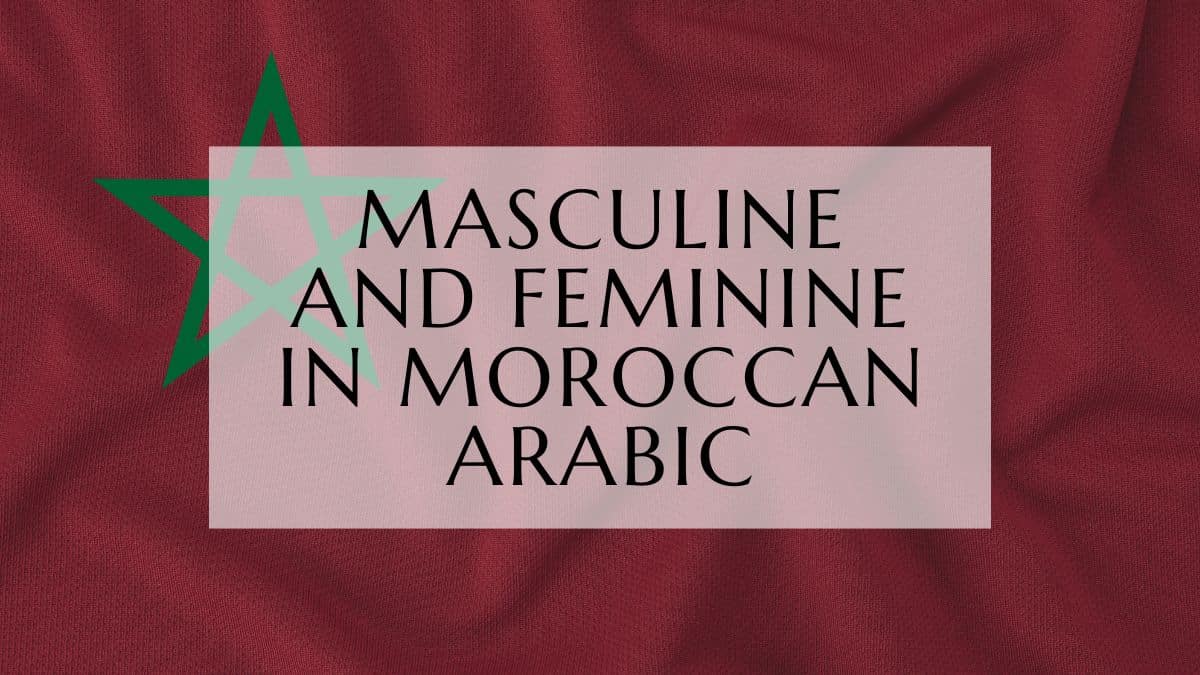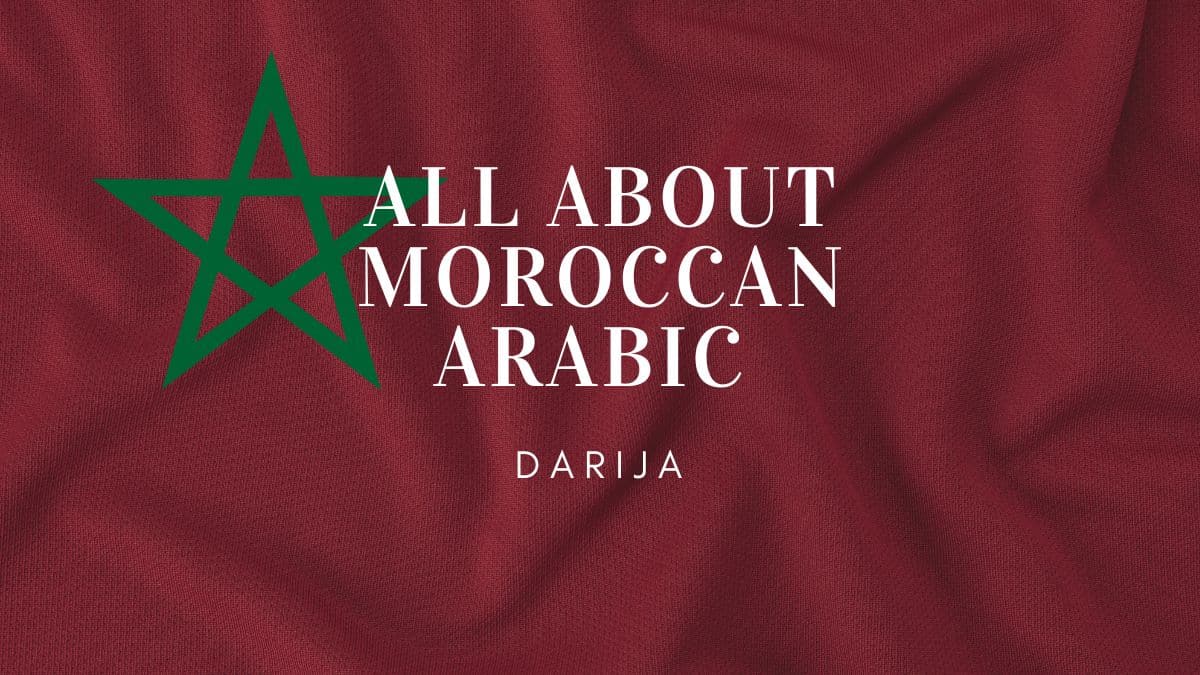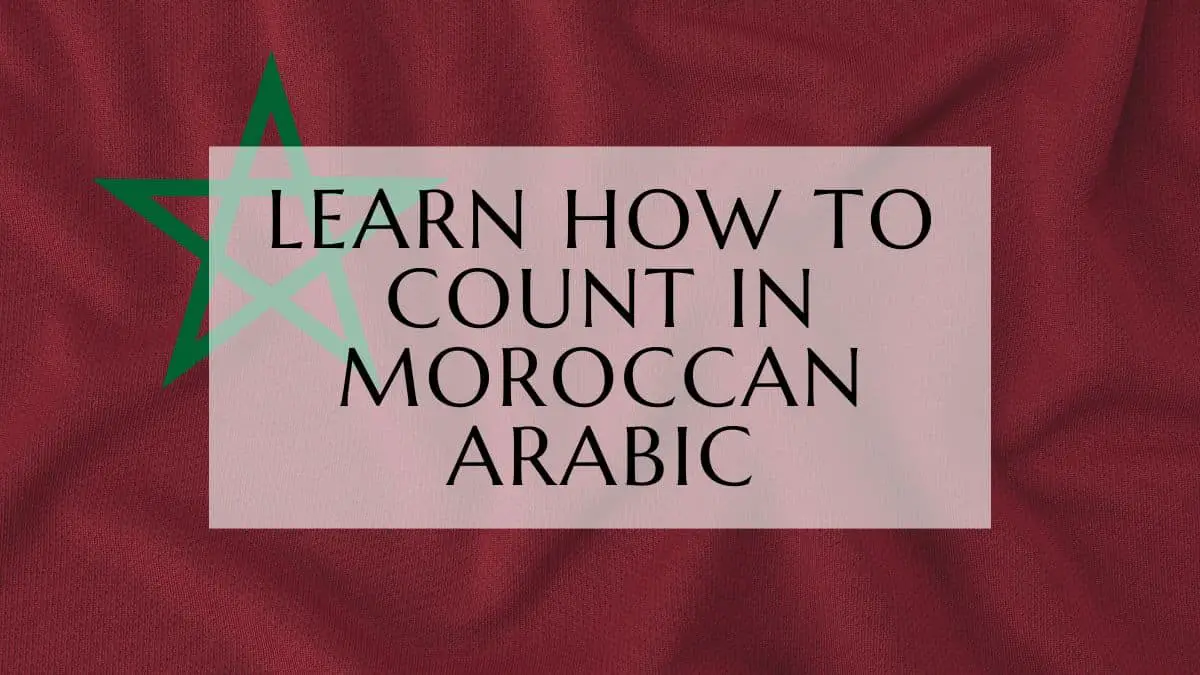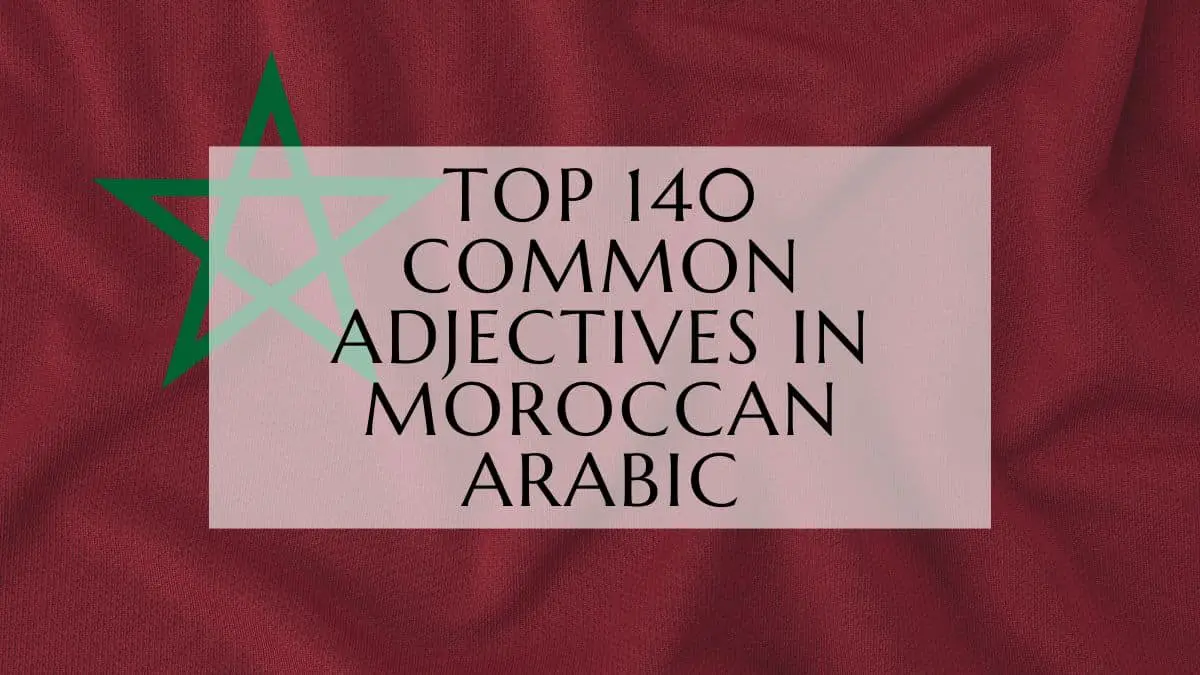In this lesson, we will talk about masculine and feminine in Moroccan Arabic, starting with the one and simple rule to form feminine for words and adjectives in Moroccan Arabic, then give a little explanation followed by examples.

Masculine And Feminine In Moroccan Arabic
The One And Simple Formula
Generally, to form a feminine, just add “a” to the end of the msculine noun or adjective: Feminine = Masculine + “a”
Example: For a Moroccan male: Mghribi , Moroccan Female would be Mghribia.
Examples Of Feminine Words In Darija
| English Word | Masculine In Moroccan Arabic | Feminine In Moroccan Arabic |
| Happy | Fer7an فرحان | Fer7ana فرحانة |
| Sad | M9all9 مقلق | M9all9a مقلقة |
| Tired | 3ayan عيان | 3ayana عيانة |
| Big | Kbir كبير | Kbira كبيرة |
| Small | Sghir صغير | Sghira صغيرة |
| Moroccan | Mghribi مغربي | Mghribia مغربية |
| Algerian | Jazayri جزايري | Jazayria جزايرية |
| Tunisian | Tunsi تونسي | Tunsia تونسية |
| Egyptian | Misri مصري | Misria مصرية |
| Swiss | Swisri سويسري | Swisria سويسرية |
| German | Almani ألماني | Almania ألمانية |
| Tall | Twil طويل | Twila طويلة |
| Short | 9sir قصير | 9sira قصيرة |
| Doctor | Tbib طبيب | Tbiba طبيبة |
| Teacher | Ostad أستاد | Ostada أستادة |
| Nurse | Fremli فرملي | Fremlia فرملية |
| Lawyer | Mo7ami محامي | Mo7amia محامية |
Note: you can practice what you’ve learned here, and learn how to pronounce each of the words in our Memrise course here, don’t know how to use the platform or sign up? we’ve got you covered in this easy-to-follow tutorial here.
If you could read Arabic, you may have noticed that the “a” is the same ta2 marbota التاء المربوطة ة that comes at the end of most feminine nouns and adjectives, but there are some exceptions for that rule, because not all feminine words ends with “a”, the following table lists some ways to know if the word is feminine:
| Way | Example |
| “a” ending | Kozina كوزينة kitchen Banana بنانة banana |
| Female names | Fatima فاطمة Maryam مريم Kenza كنزة |
| Some body parts | 3in عين eye Rjel رجل foot Yad يد hand |
Don’t worry about the exceptions as they are commonly used, so you will get familiarised with them from hearing them frequently in context, here are some:
- Dar دار house
- Shams شمس sun
Exercise
Turn the following words into a feminine form:
New: jdid جديد
Bad: khayb خايب
Afraid: khayf خايف
Journalist: sa7afi صحافي
French: fransawi فرنساوي
Sick: mrid مريض
Beautiful: zwin زوين
Once finished the exercise, scroll down for the solutions:

Exercise Solutions
New: jdida جديدة
Bad: khayba خايبة
Afraid: khayfa خايفة
Journalist: sa7afia صحافية
French: fransawia فرنساوية
Sick: mrida مريضة
Beautiful: zwina زوينة
That was all about masculine and feminine in Moroccan Arabic, take your time learning it before continuing to other topics.
Moroccan Arabic: Masculine and Feminine Review
Quiz
Instructions: Answer the following questions in 2-3 sentences.
- What is the general rule for forming the feminine of a noun or adjective in Moroccan Arabic?
- Provide two examples of Moroccan Arabic feminine words that demonstrate the general rule.
- Besides the general rule, what is another way to identify a feminine noun in Moroccan Arabic? Give an example.
- What is the Arabic term for the “a” ending often used to form feminine nouns, and what does it translate to in English?
- List three exceptions to the general rule of forming feminine nouns, where the word does not end in “a.”
- What is the feminine form of the adjective “khayb” (bad)?
- What is the feminine form of the noun “sa7afi” (journalist)?
- Translate the following phrase into Moroccan Arabic: “a beautiful doctor.”
- Why is it important to learn the distinction between masculine and feminine forms in Moroccan Arabic?
- How does the article suggest you practice the masculine and feminine forms you’ve learned?
Quiz Answer Key
- The general rule for forming the feminine of a noun or adjective in Moroccan Arabic is to add an “a” at the end of the masculine form.
- Two examples of Moroccan Arabic feminine words demonstrating this rule are “mghribia” (Moroccan female), formed by adding “a” to “mghribi” (Moroccan male), and “kbira” (big – feminine), formed by adding “a” to “kbir” (big – masculine).
- Another way to identify feminine nouns is by their inherent meaning related to female gender. For example, “Kenza” is a feminine name and inherently a feminine noun.
- The Arabic term for the “a” ending is “ta2 marboota” (التاء المربوطة), which translates to “tied/connected taa” in English.
- Three exceptions to the general rule are “dar” (house), “shams” (sun), and “3ayn” (eye).
- The feminine form of “khayb” (bad) is “khayba.”
- The feminine form of “sa7afi” (journalist) is “sa7afia.”
- “A beautiful doctor” in Moroccan Arabic is “Tbiba zwina.”
- Learning the distinction between masculine and feminine forms is crucial for grammatical accuracy, as it affects adjective and pronoun agreement, verb conjugation, and overall communication clarity.
- The article recommends practicing the masculine and feminine forms using their Memrise course, where you can learn pronunciation and see the words used in context.
Happy learning!
Oualid Cheddadi is the founder of Lingualid, a platform that inspires independent language learners worldwide, regardless of the language they are learning. The name “Lingualid” is derived from the Portuguese word for “language,” “língua,” and the last three letters of Oualid’s name, “Lid.”



